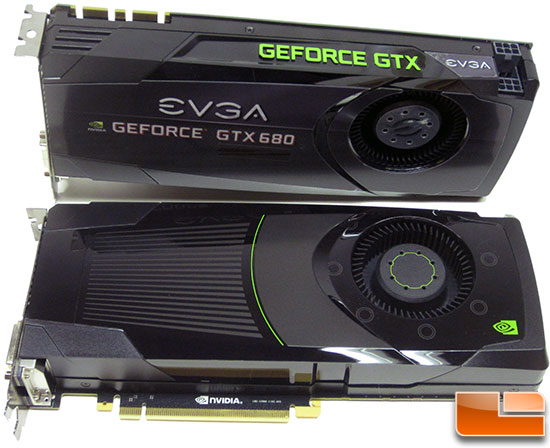The focus of this article will be from the single monitor point of view, so we'll be bringing you performance numbers at 2560x1600, 1920x1080 and 1280x1024 to show you how this killer setup performs. We'll also be taking a look at the power consumption, noise levels and temperatures that will get form a GeForce GTX 680 2-Way SLI setup.

In case you are wondering you can mix two difference brand boards for SLI as long as they are running the same GPU. Since the EVGA GeForce GTX 680 is based off the NVIDIA reference design, they will work perfectly together in SLI.
When it comes to the performance results, the NVIDIA GeForce GTX 680 performed as expected and we were impressed. Our performance numbers significantly improved and our gaming experience was better! Of the nine benchmarks that we used we found that adding a second GeForce GTX 680 for SLI improved performance on average by 64% at a resolution of 1920x1080 and 84% at 2560x1600. All of our tests showed a larger benefit from running in SLI at 2560x1600, so if you are gaming on a 30-inch panel you will get bigger performance gains that someone on a smaller 21.5-24" panel. Performance scaling was fairly solid and we didn't run into any gaming issues on this multi-GPU setup, which is impressive seeing how this is the first public driver for the new Kepler core architecture! Then again, this is a $1000 setup, so it better work right!
The only real negatives of the NVIDIA GeForce GTX 680 set would be the increase in power use, heat and noise. The noise levels remain acceptable though, so we don't believe anyone will be discouraged from buying this setup by it. It should be noted that we did space out our cards to leave a gap between them, so if you place them directly next to each other you might see even higher temperatures and noise levels. NVIDIA has done a marvelous job with their GPU cooler and fan profiles though, so this isn't like running a pair of GeForce GTX 285's in SLI or GeForce GTX 480's if you happened to run that setup at one point in time. Still, if you plan on running a pair of GeForce GTX 680's in SLI you would want to run them as far apart as possible and for that you should get a flexible SLI bridge.
We hope that NVIDIA looks into a solution that is comparable to AMD's ZeroCore Power feature that they introduced with the Radeon HD 7000 series. It would be nice to totally shut down the secondary card when you aren't gaming or in need of it for increased power savings and reduced noise levels. That is our only gripe we had when using the GeForce GTX 680 setup!
Legit Bottom Line: Running a pair of NVIDIA GeForce GTX 680's in 2-way SLI took our Ultra HD gaming on the Dell 30-inch display to the next level by running everything at acceptable frame rates!


No comments:
Post a Comment